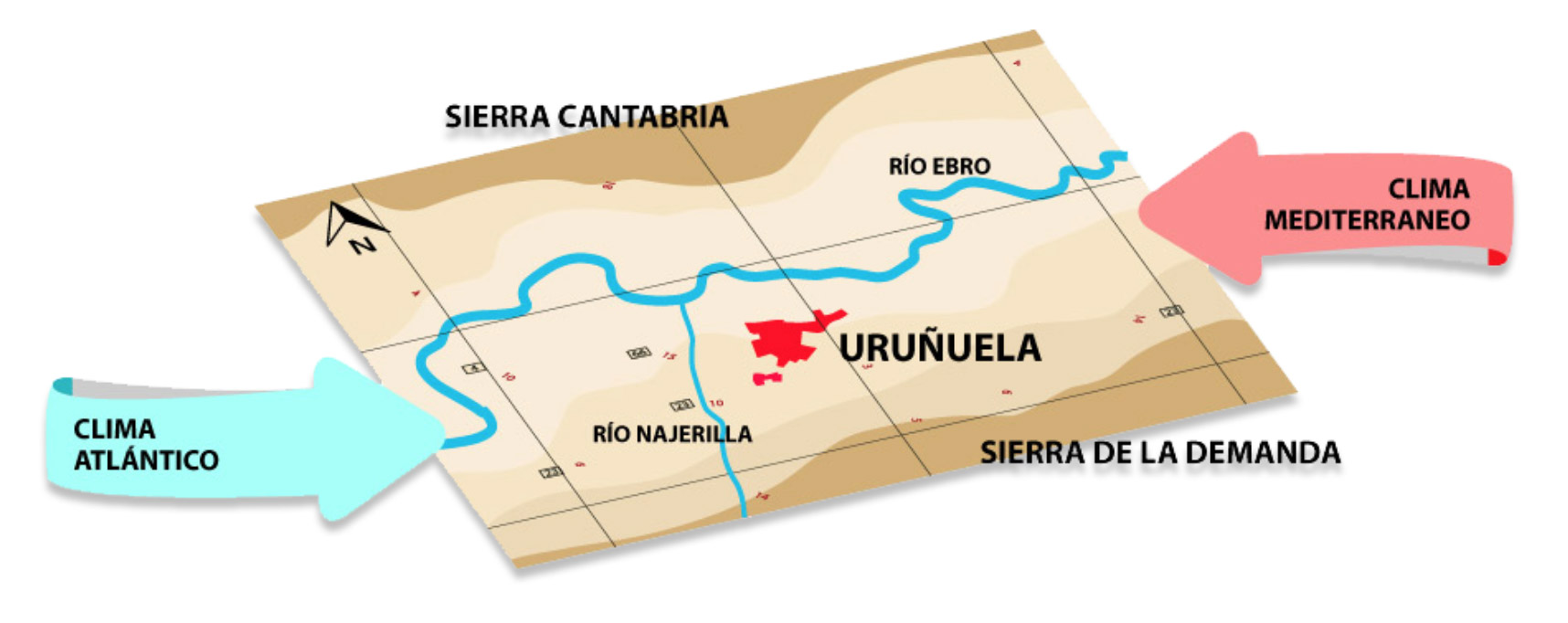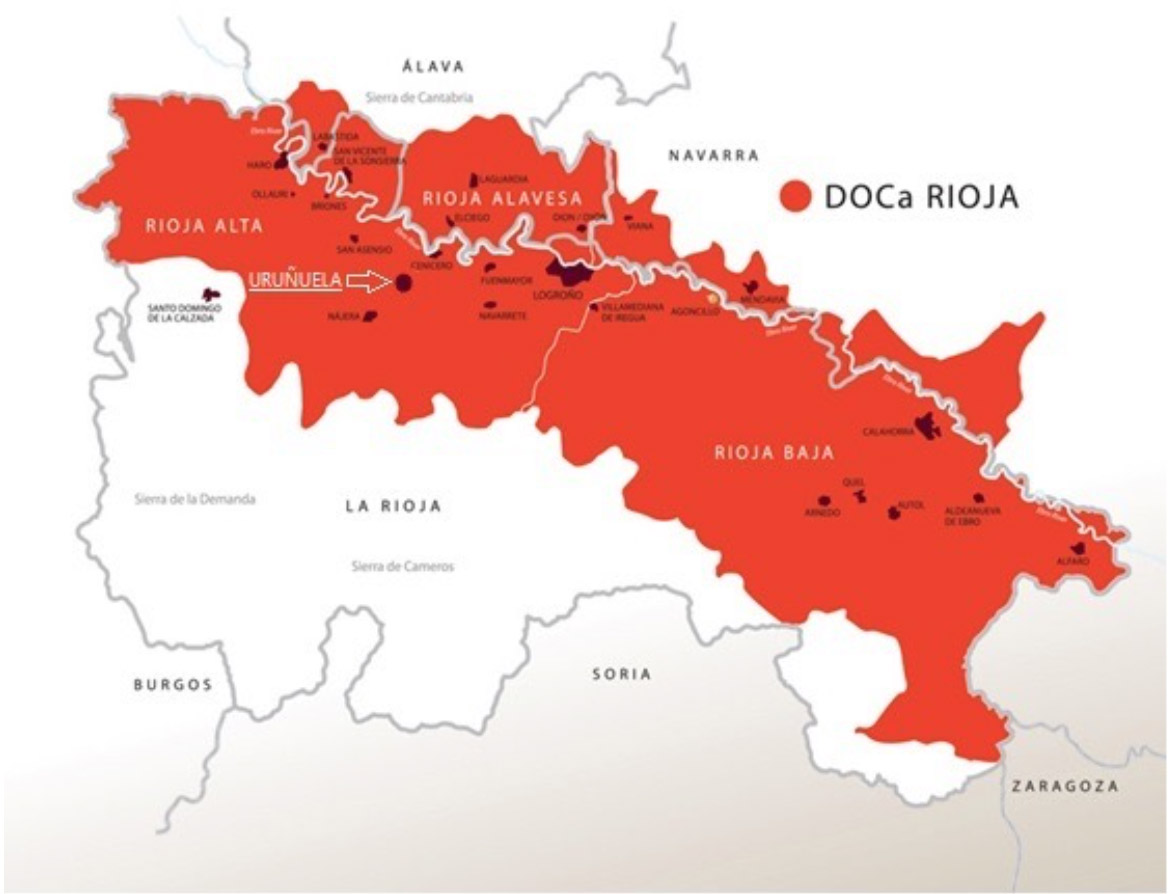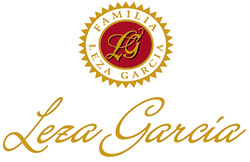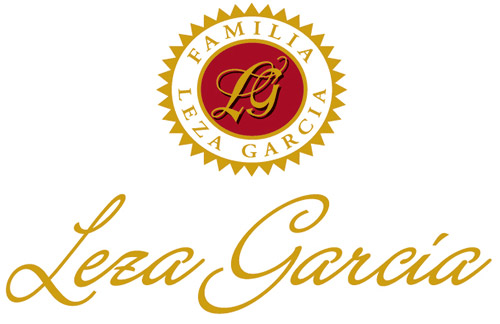In the heart of Rioja Alta
LA RIOJA
La Rioja. A unique land for winemaking
In terms of geographical location, few wine-growing areas are on a par with La Rioja. Encompassing the uppermost part of the River Ebro, the region benefits from the mild climate of northern Spain. This means abundant sunshine, enough rain and a variety of climates and soils, which allows us to produce diverse, complex wines that are always true to their terroir.

Privileged environment for growing grapes : Rioja Alta
West of Logroño, in the north bank of the Ebro River. The altitude of the vineyards varies between 1600 ft. to 2600 ft.. The soils vary from those formed by a mixture of clay and limestone, clay with significant iron content and in some cases, floodplains, which allows the best conditions for grape growing. It also presents a clear Atlantic influence, ensuring the necessary moisture. This is the heart of La Rioja, where the historic wineries were born. The village of Uruñuela is located here and is the home of Bodegas Leza Garcia.

Qualified Designation of Origin (DOCa) RIOJA
The European Union recognizes certain products for their unique characteristics, which are closely linked to their geographical area of origin. These products are safeguarded by a «Protected Designation of Origin» (PDO), guaranteeing the quality and origin of the products.
Rioja wines are recognized as a PDO and in Spain are also granted the specific sub-classification “Qualified Designation of Origin”, reserved for wines that fit specific requirements.
Classification of wines: Joven, Crianza, Reserva and Gran Reserva
Within the Rioja Qualified Designation of Origin, red wines account for 75% of production. The rest are white and rosé wines, which are ever increasing in number. It is estimated that there are approximately 1.3 million barrels in La Rioja – the largest collection of barrels in the world. Oak is an unmistakable characteristic of our wines, which are classified according to the time they have spent in a barrel. The wine will have highly distinct flavors and aromas depending on its classification.
Joven
Literally meaning «young» in Spanish, this category guarantees the origin and vintage of the wine. These are usually wines less than two years old that have retained their fresh, fruity aromas. Other wines that do not fit into the Crianza, Reserva or Gran Reserva categories may also be included in this category – despite potentially having undergone some degree of ageing – if they do not exactly correspond to the Regulatory Council’s requirements.
Crianza
This classification corresponds to wines that are at least two years old and have spent a minimum of one year in an oak barrel. For white wines, the minimum barrel-ageing period is six months. These wines start to develop aromas derived from their time in the barrel: spicy and smoky aromas are combined with the fruity aromas.
Reserva
This category corresponds to very select wines with a minimum ageing period in oak barrels and bottles of three years, at least one of which must be in a barrel. The ageing period specified for white wines is two years, during which time they must have spent a minimum of six months in a barrel. The resulting wines are extremely complex with a wide variety of aromas, smoky oak being the most noteworthy.
Gran Reserva
This category is reserved for wines from exceptional vintages that have been aged in an oak barrel for a minimum of two years and in a bottle for three years. For white wines, the ageing period is four years, with a minimum of six months in a barrel. These are the legendary wines of La Rioja: silky and incredibly complex, with brick-red and brownish hues.



